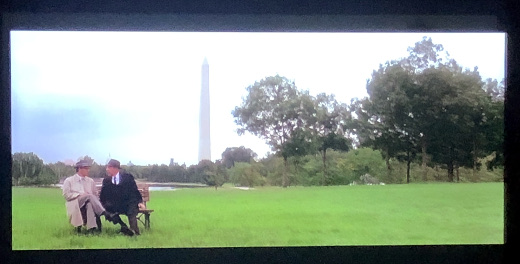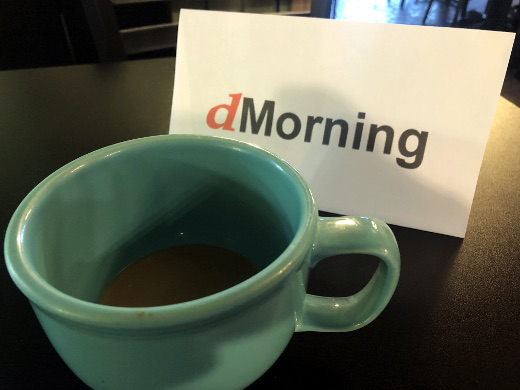Mike Maddaloni Featured in Associated Press Article on Amazon Ads
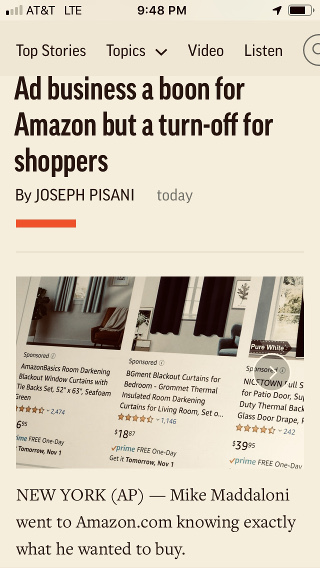 They’re everywhere. They’re annoying. But they’re effective.
They’re everywhere. They’re annoying. But they’re effective.
Where the above 3 sentences could apply to a lot of things, here I’m talking about Internet advertising. From banner ads to text ads to search ads, they are what supposedly finances the Web site you are on, or at least that’s the idea. The earnings from ads here on The Hot Iron this month won’t even buy me an hour of on-street parking in my city. But some ads, especially those found when searching for something, can be very lucrative.
My thoughts on these ads and how they are pervasive on Amazon.com was featured in an article published today by the Associated Press. Titled “Ad business a boon for Amazon but a turn-off for shoppers” by Joseph Pisani, I was one of a few who talked about the ads and their impact on consumers. An example of a recent frustration I had when searching for a product on Amazon opened the article.
I connected with the author through Twitter, seeing a tweet of his asking for people to share their experiences on searching for products on Amazon. The example I stated was real – when I was searching for one product the results showed a different “featured” brand, followed by other brands then 4 or 5 items down the list (differing on various searches) I found the brand and model I was looking for.
Is this type of advertising deceptive? It’s hard to see the small text or icon stating the other items are ads. These days I look for these things, others may just buy the product that paid to be at the top of the list. The ads on Amazon are unique as most all of the items are for sale through the site, and I say that as Amazon even displays paid ads for products on other sites.
The reach of the AP
Articles published by the Associated Press are often carried verbatim or in a modified form on many news outlets. As a result this article can be read on the Web sites for the New York Times, Fox Business, ABC News and even in the Spanish Edition of the San Diego Union-Tribune. Thanks to Jonathan Hoenig for first bringing the article to my attention.
I welcome your thoughts on these types of ads and if they have impacted you, as well as any comments on the article in general.
This is from The Hot Iron, a journal on business and technology by Mike Maddaloni.
Did you enjoy this? Subscribe to The Hot Iron by RSS/XML feed or Read by Email
Business • Strategize • Technology • Web Design • (0) Comments • PermalinkLiterally Promoting Search in 1999
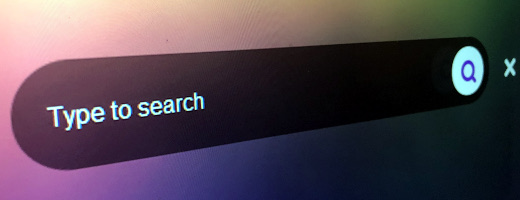
It’s been said if you can’t find anything on the Web by searching for it, it may as well not even exist. Since Google’s launch over 20 years ago that has certainly been the mantra, as their single search box with precise search results trumped all other search engines out there to become the dominant search destination it is today.
Around that same time, I felt the same about search, but on a slightly smaller scale, though with an international reach. I was literally promoting search for the Intranet portal for a global professional services firm in 1999.
Search Hidden and With Good Reason
In 1999 I became the manager of the front-end development team for this portal, which meant I was responsible for leading the team creating and enhancing its Web pages. As part of the role, I had to evaluate the functionality and design we had already, as the portal was being developed by a consulting team that was rolling off the project. When I evaluated the search function, by my best approximation it was poor to non-functional and of no value to anyone using it.
As I quickly came to learn, search was not a priority for the portal. The business sponsors didn’t even want people to simply search for content, rather to use a complex, nested set of 3 drop-down lists to select a category for which content would be presented. If that sounds convoluted, it was. The categories, or taxonomy, mirrored the structure of the firm. The idea was you would navigate to where you “worked” and voila, there would be content waiting for you.
Or so one would think, however this wasn’t always the case. Many times there wasn’t any content there, especially in the early days to months of the portal. But that wasn’t that my concern, as we had an entire other team working on getting content into the portal. The concern for my team and I was to ensure the front-end of the portal worked and was usable.
There was no real urgency to make search function well and have a great user experience as accessing it, as it was literally tucked behind an unlabeled icon of a magnifying glass on the second page of the portal, one you would miss on first glance. There was an option on the first page of the portal prominently labeled search, but it simply led users to a list of public Internet search engines, such as Lycos and Yahoo. Remember, this was 1999.
A Better Way to Content
After the launch of the portal, we decided to tackle search. The task of working on the search engine went to our top developer. He had both a programming and mathematics background, and was eager to get search working. After some time, he was successful, and it was a highly functional and useful feature of the portal, though most people still didn’t know about it. We added a text label to the search icon and others near it where it wasn’t obvious what their functions were. Even then, you had to click the icon which took you to another page where you got a search box, adding steps (aka barriers) to get to the content you want. Over time we found that portal users were using search, and we on the development team used it to validate testing for content. Even with this new label, search was still not a prominent feature on the site, nowhere to the degree I felt it should be.
Making the Case for Search and navigation
With the initial launch of the portal and other changes including the search function behind us, it was on to version 2.0. There was a laundry list of features wanted for the portal, and one was a new user interface. As my team worked through designs and functionality, they proposed putting a search box in a prominent position on the Web site, at the top left corner, literally promoting it from obscurity. Studies of people using Web pages have shown consistently over the years people start at the top, go across the top and down the left side. By placing the search box and button at the top left, there was no extra step needed to get to search results.
I was pleased with the work and designs we put together, and then we started the process of presenting it up the food chain of the leadership for review and approval. We knew we would have tweaks and adjustments to make, but we were hopeful much of the work we did would persist, especially search.
When we presented it to the director of the development team, my direct manager, he liked it. The next step was to present it to his manager, who was the overall director of technology. But he didn’t like it. He felt it went against the goal of navigating to content and wouldn’t be approved by the top leadership of the team. We pointed out the 3 drop-down lists remained, and people could still choose to use them, as well as the work we did to improve the search function. My director was also reinforcing this, from a usability standpoint, so the busy consultants in the field could get to the content they wanted. After hesitation he agreed we could present the search box design to senior leadership but that he would not back us up on it. This was fine by me, as myself and my director would be the ones presenting it.
Shortly after this less than exciting meeting, we had the meeting with the senior leadership and business leaders for the portal to present our proposals for version 2.0. We were in a beautiful and expensive conference room with cutting-edge functionality, very expensive for that time. We had an orchestrated presentation where myself and my peers would be presenting their team’s work on the next version of the portal, with the onus on me to present the new design and the search box.
When it was my turn, I was ready – the design was cleaner and more modern, at least for standards of that time. As I presented it, I talked to the major features in priority order, and search was near the middle of it. When I brought it up, I talked to the search improvements we made, the gain in traffic to the search page and how users could still navigate to it as they have before. As I finished saying this, I saw the director of the technology literally turn away from the table, though I don’t think anyone else noticed it. As I concluded the lead partner who oversaw the entire portal looked down, and I could tell he was thinking it over. He said he liked it. Relief doesn’t begin to describe the feeling I had, and I was excited for the meeting to end to share the great news with the team.
Another Search Goal Fulfilled Years Later
As we worked on version 2.0, we did a lot of talking about the future of the portal and how it could be enhanced. I had the idea of putting a “header” or section on the pages of other portals within the firm. This header would be a thin bar across the top of the page with links back to our portal as well as a search box. It was an idea that was batted around my team, but one I was not there to even take to any design phase, for not long after version 2.0 was released, I left the firm, being lured by a dot-com startup that folded a mere half-year later (and a topic for another time).
About a half-dozen years later, my wife got a job with this same firm, but working with a consulting practice. In between those years the portal itself had gone through significant change, namely not being the focal point for the firm it was previously. One night as she was catching up on some work at home, I looked over her shoulder to see what she was doing. Much to my surprise she was on a page of the firm’s Intranet, where our portal had lived, and across the top of the page she was on was a header bar similar to what I just described. Needless to say it made me smile, and I was patting myself on the back as I walked away.
Deconstructing Promoting Search
Technology and the way we interface with it is always changing. New ideas must be encouraged, embraced and tested to truly see their effectiveness. Search is one of those areas, and its importance is even more important today. In this case the functionality of the search box was not the innovation, rather promoting it to a position of prominence on the Web pages. Where I cannot take credit for the design of the header bar that evolved over time, it in itself was an evolution of what we started with and presented with mixed results now over 20 years ago.
This is from The Hot Iron, a journal on business and technology by Mike Maddaloni.
Did you enjoy this? Subscribe to The Hot Iron by RSS/XML feed or Read by Email
Business •
Strategize •
Technology •
Thrive •
Web Design •
(1) Comments •
Permalink
3 Things I Do Differently Living In Appleton Wisconsin
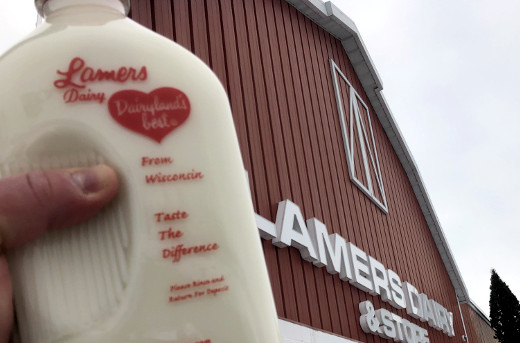
It’s been almost 2 years since my family and I moved to Appleton, Wisconsin. It has been a good move, though I haven’t written about it much, save the local obsession with roundabouts.
What makes it a good move is that I like to embrace where I am, and have enjoyed the process here. I learned to do this many years ago when I was frequently traveling for work, spending long periods of time away from home in exotic locales like Louisville, Kentucky and Phoenix, Arizona. A large part of that embrace was doing things that people local to the area would do… well at least the positive things!
Looking back on this near biennium, 3 things come to mind that I am doing differently since relocating to Appleton from Chicago, all which have been a good thing.
Eating and Drinking Locally-Produced Products – As my license plate says and I see all around me, Wisconsin is America’s Dairyland. When I found Lamers, a local dairy that sells milk from local cows in glass bottles in a store in front of where they bottle it, I was all over it. We now get all of our milk from there, and their milk makes great soft-serve ice cream which is sold in their dairy store. In addition to milk, I try to buy other dairy products – namely cheese – made as close to home as possible.
On the protein front, locally hatched eggs as well as meats from my new favorite local butcher shop Jacob’s Meat Market, are often on our dinner plates. It not only makes sense to buy bacon cured from local pigs about 20 feet from where it is sold, but additionally with all of the recalls on mass-produced meat products, knowing the source is very important.
Where one cannot live on meat and dairy alone, the Fox River Valley of Northeast Wisconsin is also home to great breweries like Stone Arch and the Appleton Beer Factory. There’s much, much more than Miller Lite in Wisconsin!
Reading Local Newspapers and Listening to Local Radio – Coming from such a large city as Chicago, most news stories there were on a grander, city-wide scale. It was hard to find coverage of stories specific to a neighborhood, which drives the term “hyper-local” news. As someone who is now on a decade of being without Cable TV, when I moved here I sought out local media outlets online on Twitter to help me understand the happenings of my new surroundings.
In the process of finding these, I dove deeper into their coverage. We have a subscription to the Appleton Post-Crescent, the local newspaper which, like most other mid-sized papers in the state, is owned by USA Today’s parent Gannett. Our subscription is only a digital one, which is fine since the local printing plant closed and the papers are printed over an hour away, guaranteeing most late sports games and other events will not make the print edition. The coverage by the small (and increasingly smaller) staff of reporters helps keep me informed of happenings I otherwise wouldn’t otherwise know of.
I have also re-embraced a medium I haven’t engaged with in a long time, local radio. For someone whose college experience was tied to the campus radio station this has been welcome. As outside of my car I don’t own a radio, fortunately I can stream radio shows and coverage by computer and mobile app, and listen to them as podcasts. In addition to the ease of the medium, the depth of coverage has been tremendous. One show specifically, Fresh Take with Josh Dukelow on WHBY, not only covers a wide breadth of topics from politics to culture, but also goes into great depth on them as well. I have been exposed to a lot of nuances of the area I would not have otherwise known about if it wasn’t for Fresh Take.
Using Ride-Sharing Services – Though certainly not something unique to this area, prior to moving to Appleton I never used services like Lyft and Uber. Coming from Chicago, where I lived steps from subway stations, major bus routes and plentiful taxis, I had no need for them. I must also admit I knew many cab drivers in Chicago who were being negatively impacted by these services as they started, and those were a deterrent to me using them. Though there are taxi services here, they are not as plentiful or to the demand-level that I am used to. This has made using Lyft in particular a great addition to my routine.
Where these are some great additions to my routine, I hope in the future I can add more to this. If you have any suggestions of other things I can do in the Appleton area, please share them in the comments to this post. And be nice!
Deconstructing Embracing What is Local
As I have traveled across the country and around the world, I have always sought out what is unique or local to the area, and tried to go beyond what is simply touristy. I have taken the same approach here in Appleton, Wisconsin and have been pleased with the results. Embracing the best of what is around you can enhance your life.
This is from The Hot Iron, a journal on business and technology by Mike Maddaloni.
Did you enjoy this? Subscribe to The Hot Iron by RSS/XML feed or Read by Email
Business •
Thrive •
(0) Comments •
Permalink
JFK Movie Park Bench Moments
Have you ever been in a situation where you had a hunch about something but weren’t quite sure of it, only for someone to come along and not only reaffirm your hunch but get into details you wish you had not known?
How about this happening to you more than once?
These situations are what I refer to as “JFK Movie park bench moments.” They have happened a couple of times in my career, and I’d like to share these here.
But first, the movie scene
If you have no idea of what I am talking about, let me explain. JFK is a movie starring Kevin Costner and directed by Oliver Stone that came out in 1991. It was about the assassination of US President John F. Kennedy through the eyes of the District Attorney of New Orleans, Louisiana, Jim Garrison.
When Garrison discovers a possible connection to JFK’s murder in New Orleans and his investigation goes public, he travels to Washington, DC to meet someone called “X,” played eerily by Donald Sutherland. They meet around the Washington Mall and sit on a park bench where X proceeds to tell Garrison that not only is he on the right track with his investigation, but provides details about it that are almost too incredible to believe. Of course when Garrison asks X to testify in his trial he says no.
Fast forward a few years
I always remembered that scene from the movie as was so unique – 2 men, sitting alone on a park bench away from – but close to – so many, with one learning the “straight dope” of what led to JFK being shot in Dallas, Texas from the other. This scene came back to me a couple of times in my career after first seeing the movie, when I found out about truths about jobs I had that, in both cases, convinced me to leave before I would have been terminated!
The Numbers and People Lie
After finishing a long-term consulting project with a firm I was working for, I went back to the firm’s office on a weekend to take care of some paperwork. When I printed a few things I grabbed the printouts from the printer only to also get some reports left on the printer by someone else. Among them was a revenue report showing me at the top of the report. Where one’s ego might be stroked to see that, my hourly rate was extremely low for the senior role I had managing the project I just left. Further down on the report were many people who were not bringing in any revenue at all.
Was all I heard about how well the firm was doing a lie? The next week I went to lunch with another consultant at the firm. Armed with the knowledge of this revenue report but not wanting to disclose it, over the meal I asked him how he thought the firm was doing. Thank goodness I have a strong stomach, as I would have tossed it up my lunch after our conversation. The modest cafeteria we were in served as the park bench and grassy for my JFK movie moment as he told me what he knew about the vitality of the firm.
This was eye opening, shocking, yet gave me a great calm in the next steps I took to leave the firm, which I did a few months later. Another six or so months after I left, the firm itself shuttered, leaving some smart people caught in a reaction to my earlier pro-action, scooped up by other lucky companies soon after.
Building the ship while it is sailing is not a good idea
Later in my career I took a leadership role on a high-profile project for an international firm. As one of the first people to join the project team, I not only had the good fortune to be able to build my own team from the ground up, but was involved in much of the interviewing across the project, helping to ensure people who joined would work well in our culture.
Early on I met with one of the senior leaders of the team, who gave an analogy in describing what we were doing that I would never forget, as he said we were “building the ship while it is sailing.” Where initially I saw this as a great opportunity, this feeling waned over time as I felt those sailing and building were far from being in sync.
There were a few managers on the project I got to know – some better than others, and one night as I was departing the office I ran into one of the managers I knew well. We chatted a bit, then felt a local pub would be a better venue to continue our conversations. After a few beverages and some good food we departed for home heading in the same direction. He was staying in a corporate apartment in a place I could never afford.
He invited me to check out said apartment and to continue our conversations. I sat in an oversized leather chair, he poured a couple of glasses of Hennessey, placed the bottle down, and then I sensed another JFK movie park bench moment in the making. He proceeded to reaffirm a lot of the concerns I had on the project, and blew me away with the history and politics of the project, and his projections for where it was going to go. Needless to say that bottle of Hennessey didn’t last long as the tales of international intrigue flew around the room.
But like before, as uncomfortable as it was to hear, it was exactly what I needed to hear. The next morning, as bleary eyed as I was, I started my quest for a new gig which I landed a few months later. Sadly within a year the whole project was shutdown, after a tumultuous ride for the dedicated team that stuck around through it all.
Deconstructing JFK Movie Park Bench Moments
Life has many mysteries. Some of them we find out, but many we go to our grave never knowing the real story of what went on. Whether or not what X was telling Garrison in the movie was completely true or not – and we may never know either way for sure – the drama of the moment stands out and can be a catalyst for action. For Jim Garrison it was to pursue the truth of the JFK murder, for me it was to find new jobs. What could it be for you?
This is from The Hot Iron, a journal on business and technology by Mike Maddaloni.
Did you enjoy this? Subscribe to The Hot Iron by RSS/XML feed or Read by Email.
Business • Strategize • (0) Comments • PermalinkNext dMorning Tech Creative Networking Event on November 9
The next dMorning meetup networking event will be on Friday, November 9 from 7:30 – 9:30 am at Copper Rock Coffee Co., 210 W. College Avenue in Appleton, Wisconsin.
dMorning was started to provide a casual environment for those who work in the technology and creative fields in Northeast Wisconsin to meet, network and have a beverage of choice. The idea is to meet in the morning before the day gets hectic. There are no set rules and no agenda. More information is available at dMorning.com.
Hope to see you there!
This is from The Hot Iron, a journal on business and technology by Mike Maddaloni.
Did you enjoy this? Subscribe to The Hot Iron by RSS/XML feed or Read by Email.
Announcements • Business • Technology • (0) Comments • Permalink

